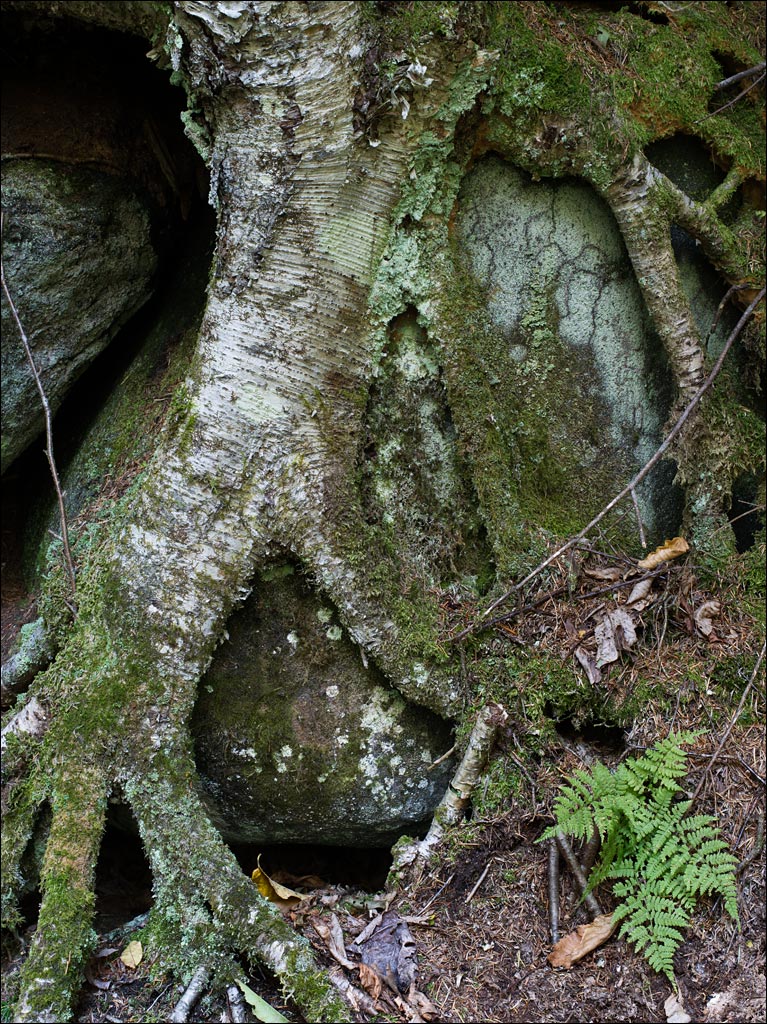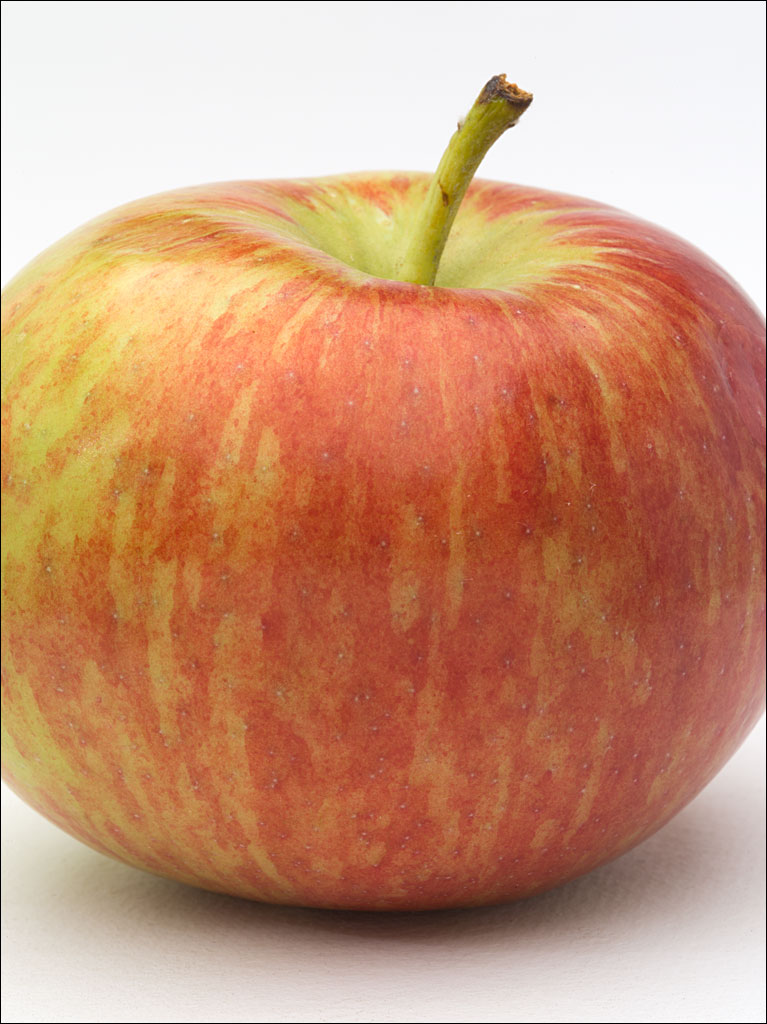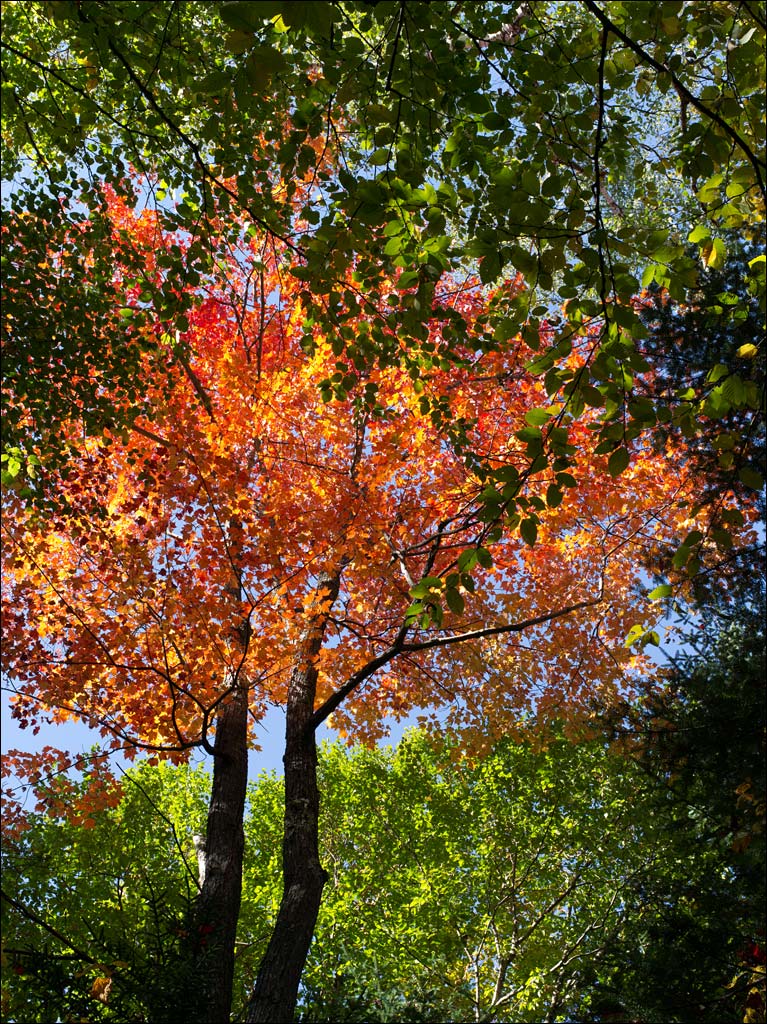 Naomi and I went out to Pemaquid Point on Sunday. From high on the rock ledges, this peninsula seems to jut out into the ocean and sky. In the roar of breaking waves, your mind is quiet. Click on the image for a larger view.
Naomi and I went out to Pemaquid Point on Sunday. From high on the rock ledges, this peninsula seems to jut out into the ocean and sky. In the roar of breaking waves, your mind is quiet. Click on the image for a larger view.
Edges
Cortland—Apples of Maine
 Next to the McIntosh, this might one of the most common apples in America. Not surprisingly, the Cortland is a McIntosh cultivar. It was crossed with a Ben Davis at the New York State Agricultural Experimental Station in Geneva, New York in 1898. The name was taken from the nearby county of Cortland. The flesh is very white with a firm, crisp texture. The flavor is pleasantly tart, which makes it excellent for eating or cooking. Click on the image for a larger view.
Next to the McIntosh, this might one of the most common apples in America. Not surprisingly, the Cortland is a McIntosh cultivar. It was crossed with a Ben Davis at the New York State Agricultural Experimental Station in Geneva, New York in 1898. The name was taken from the nearby county of Cortland. The flesh is very white with a firm, crisp texture. The flavor is pleasantly tart, which makes it excellent for eating or cooking. Click on the image for a larger view.
Twilight
Being, Becoming
 Why life? Is this self-organizing matter a natural outcome of a universe? Is it the nature of a universe to desire consciousness? The Great Gulf Wilderness was carved out by ice in the last glacial period, leaving a world of rock. Yet, in spite of this harsh terrain, life thrived. Layers upon layers of organisms colonized and built this beautiful world. Unlike the eroded mountain it inhabits, it diversified into unimaginable complexity. Click on the image for a larger view.
Why life? Is this self-organizing matter a natural outcome of a universe? Is it the nature of a universe to desire consciousness? The Great Gulf Wilderness was carved out by ice in the last glacial period, leaving a world of rock. Yet, in spite of this harsh terrain, life thrived. Layers upon layers of organisms colonized and built this beautiful world. Unlike the eroded mountain it inhabits, it diversified into unimaginable complexity. Click on the image for a larger view.
Duchess of Oldenburg—Apples of Maine
 Duchess of Oldenburg is an old variety originating in 18th-century Russia. It is one of the earliest apples of the season, bearing in mid-August. Most people prefer this as a cooking apple for pies or sauces as it is quite tart—it reminds me of a sour grape. Duchess does not store well. Click on the image for a larger view.
Duchess of Oldenburg is an old variety originating in 18th-century Russia. It is one of the earliest apples of the season, bearing in mid-August. Most people prefer this as a cooking apple for pies or sauces as it is quite tart—it reminds me of a sour grape. Duchess does not store well. Click on the image for a larger view.
The Fall
 With the riot of fall color, comes a melancholy. The vitality of life that burst forth in summer seems to have burnt itself out. The fern that erupted from our forest floor in May, fades back into the soil. Click on the image for a larger view.
With the riot of fall color, comes a melancholy. The vitality of life that burst forth in summer seems to have burnt itself out. The fern that erupted from our forest floor in May, fades back into the soil. Click on the image for a larger view.
Foliage Season
 Foliage season has come to New England. The season peaks in mid-October, but I have always enjoyed the period at the end of September, when the blaze of reds and oranges are contrasted with the lingering greens of summer. With the vivid blue skies of autumn, the season is a celebration of color. Click on the image for a larger view.
Foliage season has come to New England. The season peaks in mid-October, but I have always enjoyed the period at the end of September, when the blaze of reds and oranges are contrasted with the lingering greens of summer. With the vivid blue skies of autumn, the season is a celebration of color. Click on the image for a larger view.
Ginger Gold—Apples of Maine
 Ginger Gold is a modern variety grown commercially from the 1980s. Clyde Harvey discovered this apple in 1969 when his Virginian orchard was washed out by Hurricane Camille. It is believed to be a mix of Golden Delicious, Newtown Pipin, and an unknown variety. The apple is named after his wife.
Ginger Gold is a modern variety grown commercially from the 1980s. Clyde Harvey discovered this apple in 1969 when his Virginian orchard was washed out by Hurricane Camille. It is believed to be a mix of Golden Delicious, Newtown Pipin, and an unknown variety. The apple is named after his wife.
Ginger Gold is an early apple that begins to bear in August. The pale green skin is smooth and waxy, and develops a slight red blush when it ripens. The flesh is sweet and rich with a slight hint of lemon. Click on the image for a larger view.



